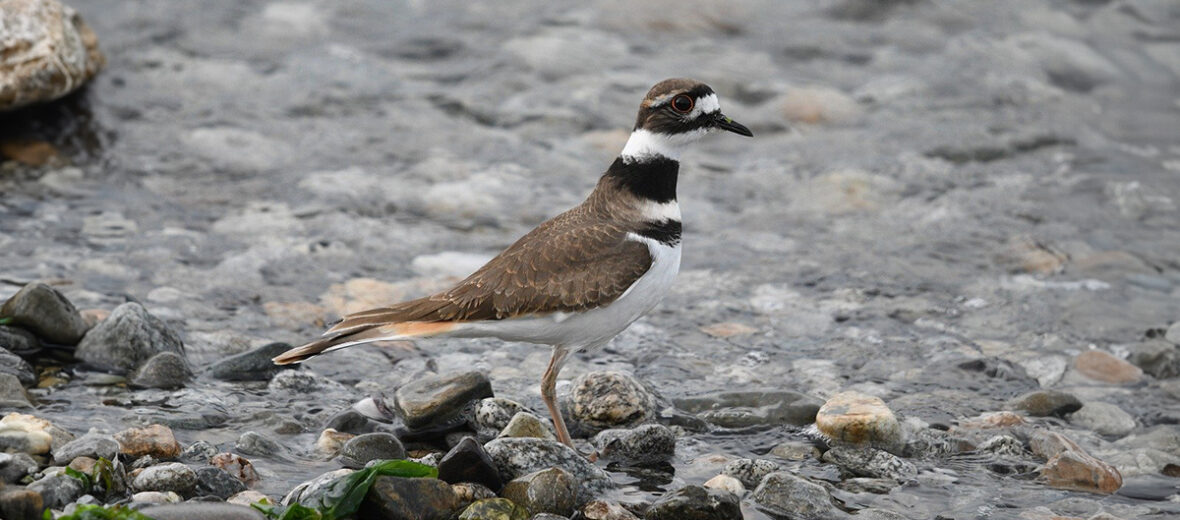
The killdeer gets its name from their shrill, 2-syllable call. These large plovers are found throughout Canada, United States, Mexico, Central America, as well as northern and western South America. With no major threats facing these birds, sans habitat loss, these critters are listed as Least Concern by the IUCN. Their numbers are slightly decreasing though.
First the Stats…
Scientific name: Charadrius vociferus
Weight: Up to 4.5 ounces
Length: Up to 11 inches
Wingspan: Up to 25 inches
Lifespan: Up to 10 years
Now on to the Facts!
1.) They prefer beach habitats, coastal fields, and coastal wetlands during their nonbreeding times, whereas during the breeding season they prefer open fields with short vegetation.
2.) Insects, various invertebrates, and seeds are all consumed.
3.) Birds of prey, gulls, crows, ravens, snakes, foxes, coyotes, domestic cats, domestic dogs, raccoons, skunks, and Virginia opossums all prey on killdeers.
4.) These birds are diurnal (active during the day) during the nonbreeding season. However, during the breeding season, amidst the full moon nights, they are nocturnal (active at night) too.
5.) They were described in 1758 by Swedish naturalist and historian Carl Linnaeus in the 10th edition of his Systema Naturae.
But wait, there’s more on the killdeer!
6.) Foot-trembling is utilized to stir up prey items in the mud and water. This is where they will stand on 1 foot and shake the other foot to stir up food, eating whatever rears its head.
7.) Females lay up to 6 eggs that hatch in up to 28 days.
Did you know…?
Killdeers are protected by the American Migratory Bird Treaty Act of 1918 and the Canadian Migratory Birds Convention Act.
8.) Chicks fledge up to 31 days after hatching.
9.) The killdeer is often parasitized by acanthocephalans, cestodes, nematodes, and trematodes.
10.) A popular method of predator prevention is the “broken-wing display”, aka “injury feigning”. Before displaying either, it typically runs from its nest, making various alarm calls and other distractions. When the bird has the attention of the predator, it will turn its tail towards the predator, displaying the threatening orange color of their hind end.
Now a Short Killdeer Video!
Be sure to share & comment below! Also, check out the Critter Science YouTube channel. Videos added regularly!
Want to suggest a critter for me to write about? Let me know here.
Some source material acquired from: Wikipedia & IUCN



